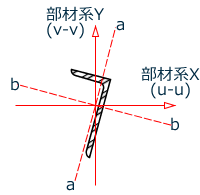D3.B.1 General
The design philosophy embodied in BS5950:2000 is built around the concept of limit state design, used today in most modern steel design codes. Structures are designed and proportioned taking into consideration the limit states at which they become unfit for their intended use.
Two major categories of limit state are recognized - serviceability and ultimate. The primary considerations in ultimate limit state design are strength and stability while that in serviceability limit state is deflection. Appropriate safety factors are used so that the chances of limits being surpassed are acceptably remote.
In the STAAD.Pro implementation of BS5950:2000, members are proportioned to resist the design loads without exceeding the limit states of strength and stability. Accordingly, the most economic section is selected on the basis of the least weight criteria. This procedure is controlled by the designer in specification of allowable member depths, desired section type or other such parameters. The code checking portion of the program checks that code requirements for each selected section are met and identifies the governing criteria.
The complete B.S.C. steel tables for both hot rolled and hollow sections are built into the program for use in specifying member properties as well as for the actual design process. See D3.B.4 Built-In Steel Section Library for information regarding the referencing of these sections. In addition to universal beams, columns, joists, piles, channels, tees, composite sections, beams with cover plates, pipes, tubes, and angles, there is a provision for user provided tables.
The program designs tapered I shaped beams according to Annex G of BS5950. See D3.B.13 Design of Tapered Beams for a complete description.
シングルアングル断面
アンクル断面が非対称で、BS 5950:2000テーブル25を使用する際には、2つの主軸であるu-uおよびv-v、2つの幾何学軸であるa-aおよびb-bの、4つの軸を考慮する必要があります。v-v軸の有効長さはLVVパラメータから取得されますが、未指定の場合はLY · KYとなります。a-a軸とb-b軸は、アングルのどの脚が接合部に固定されるかで決まり、LEGパラメータにより設定する必要があります。LEGパラメータの詳細については、5B.6節を参照してください。a-a軸における有効長さはLY · KYとなり、b-b軸における有効長さはLZ · KZとなります。
次の図は、STまたはRAの設定によって定義されるアングルの軸を示しています。アングルは長脚において接合されています(a-a軸は長脚に対して平行となります)。


